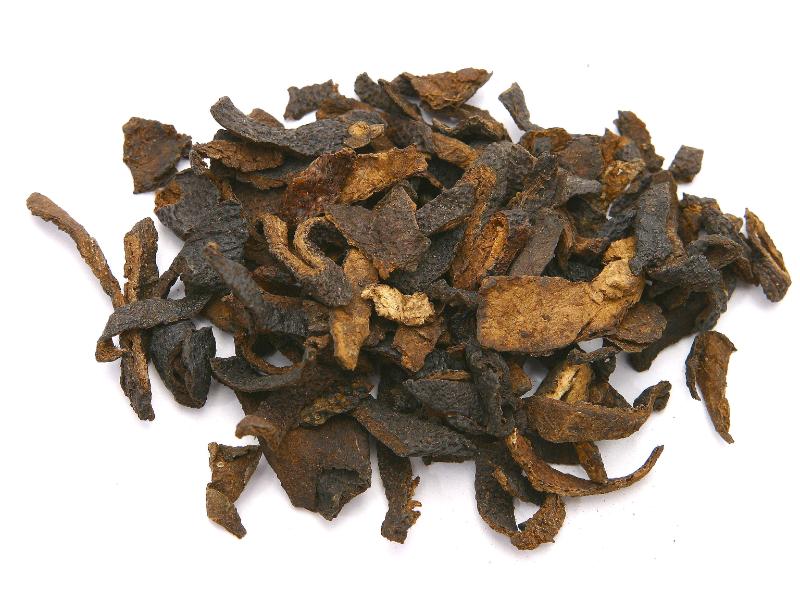Search in medicinals
Citri Reticulatae Pericarpium
Tangerine peel
陈皮 〔陳皮〕 chén pí

Alternate Chinese names: 橘皮 jú pí; 贵老 guì lǎo; 红皮 hóng pí
Kingdom: Plant
Origin in PRC Pharmacopoeia: Citrus reticulata Blanco. (PRC Pharmacopoeia)
Origin in unofficial sources: Citrus tangerina Hort. et Tanaka; Citrus erythrosa Tanaka; Citrus unshiu Marcor. [= C. aurantium L. subsp. nobilis Makino]; Citrus subcompressa Tanaka; Citrus succosa Tanaka; Citrus kinokuni Tanaka; Citrus ponki Tanaka; Citrus reticulata Blanco*
Use: Medicinal and alimentary
Category: Qì-rectifying agents
Properties: Acrid, bitter; warm.
Channel entry: Spleen and lung channels.
Actions and indications:
- Moves qì and fortifies the spleen: Spleen-stomach qì stagnation.
- Dries dampness and transforms phlegm: Cough from damp phlegm or cold phlegm.
Dosage and method: Oral: 3–10g, in decoctions. Use raw for damp phlegm cough or stir-fried to fortify the spleen and harmonize the stomach.
Warnings: Chén pí is acrid and dispersing as well as warm, bitter, and drying. It should be used with care in internal repletion heat manifesting in a red tongue with scant liquid, and it is unsuitable for dry cough with qì vacuity or yīn vacuity. Chén pí should be used with care in patients suffering from vomiting of blood (blood ejection). Prolonged use in large doses may damage original qì.
Product description: The dried skin is 1–2 mm thick. The exterior surface is reddish brown and wrinkled and bears numerous oil spots. The inside is white and spongy. The red and white layers may be cut apart before drying to be used separately.
Quality: The best quality is thin, red, oily, strong-smelling peel in large pieces.
Production area: Guǎngdōng, Guǎngxī, Fújiàn, Zhèjiāng, and Sìchuān.
Etymology: The name chén pí 陈皮, literally old peel,
reflects the maturing process involved in producing good tangerine peel.
See: Zhǐ jù zǐ (枳椇子 Hoveniae Fructus seu Semen, honey tree fruit)
Back to search result Previous Next